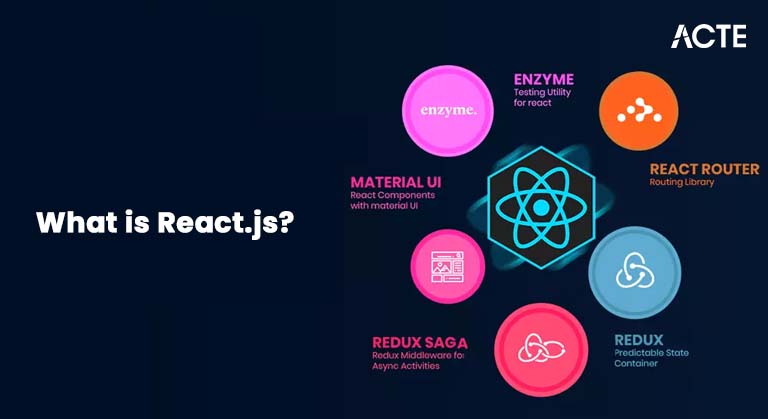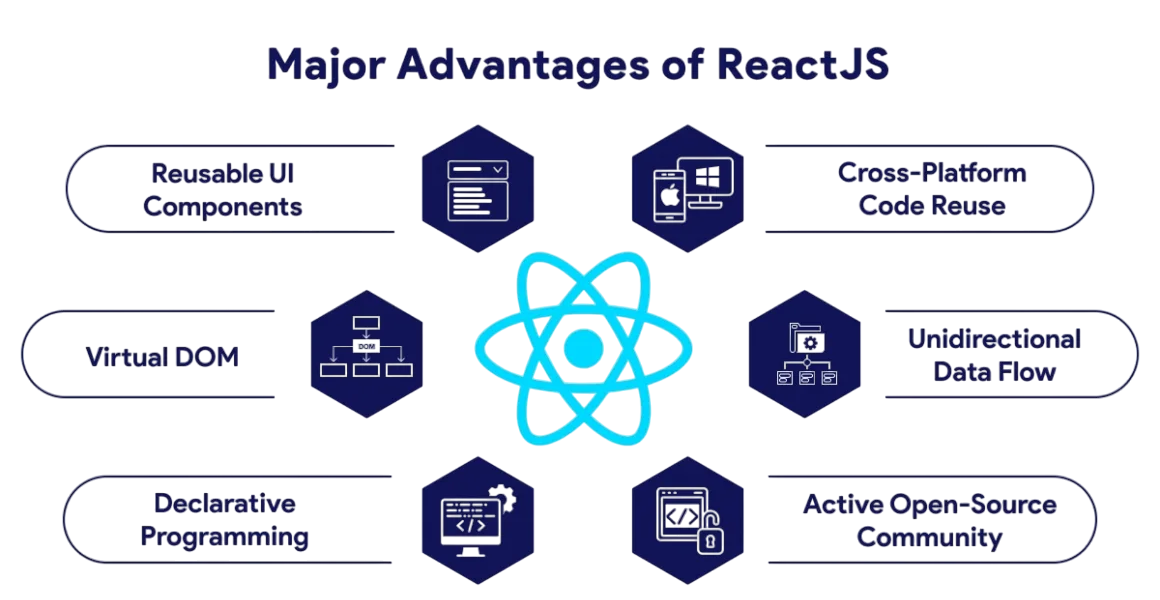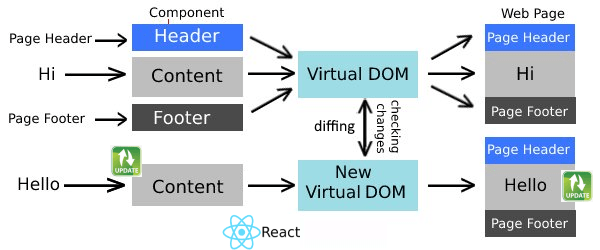
- Introduction
- What is React.js?
- History and Evolution of React
- Core Features of React.js
- How Does React.js Work?
- Why Should You Learn React.js?
- React.js vs. Other Frameworks (Vue, Angular)
- Use Cases of React.js
- Conclusion
Introduction
In the world of web development, creating fast, interactive, and scalable user interfaces is critical to providing an excellent user experience. One of the most popular JavaScript libraries used for this purpose is expert to beginner React.js. Developed by Facebook, React has gained massive popularity among developers for its simplicity, flexibility, and powerful features. In this blog post Learning react js, we’ll take a deep dive into what React.js is, its core features, how it works, and why it has become the go-to choice for front-end development. Whether you’re a beginner or an experienced developer, understanding React.js is key to mastering modern web development.
Do You Want to Learn More About Business Analyst? Get Info From Our Business Analyst Training Today!
What is React.js?
React.js, often simply referred to as React, is a JavaScript library for building user interfaces, specifically for single-page applications (SPAs). It enables developers to create dynamic and responsive web applications by allowing them to build reusable UI components. Unlike traditional JavaScript frameworks, React allows you to efficiently update and render the user interface by updating only parts of the DOM that need changes, ensuring faster and smoother web applications. Learning react js focuses primarily on the view in the Model-View-Controller (MVC) architecture, making it a UI library rather than a full-fledged framework. It works by creating components, which are the building blocks of the user interface.
History and Evolution of React
React was first developed by Jordan Walke, a software engineer at Facebook, in 2011. It was initially used internally at Facebook to improve the performance of their News Feed and to make the codebase more maintainable. In 2013, React was open-sourced, and it quickly became popular among developers. Some key milestones in the evolution of React include:
- 2013: React was open-sourced.
- 2015: The release of React 0.14 with support for ReactDOM.
- 2016: The introduction of React Native, a framework for building mobile apps using React.
- 2017: The release of React 16 with features like error boundaries and fiber architecture.
- 2020: The introduction of React Server Components and advancements in React Hooks.
React’s flexibility and focus on a component-based architecture have made it one of the most widely used libraries in the industry today.
Would You Like to Know More About Business Analyst? Sign Up For Our Business Analyst Training Now!
Core Features of React.js
React.js is loved by beginner react developers for several powerful features that make it highly efficient, modular, and easy to use.
Component-Based Architecture
At the core of React is its component-based architecture. In React, an application is broken down into reusable components, each responsible for rendering a part of the UI. Components can be functional or class-based, and they can manage their state and handle events. Components can also be nested inside other components, enabling you to build complex UIs by combining smaller, simpler pieces.
Example of a simple functional component:
- function Greeting() {
- return <h1>Hello, World!</h1>
- }
Virtual DOM
One of the most important features of React is the Virtual DOM. The Virtual DOM is a lightweight copy of the actual DOM (Document Object Model). When changes occur in a React app, they are first made to the Virtual DOM, which then calculates the most efficient way to update the real DOM. This process is known as reconciliation. By minimizing direct interactions with the real DOM, React improves performance and makes applications faster and more responsive.
Declarative Syntax
React uses a declarative syntax, meaning that you describe what the UI should look like at any given point in time, rather than specifying how to make changes. React then takes care of updating the UI when the state or data changes. This declarative approach makes React applications more predictable and easier to debug. Instead of manipulating the DOM directly, you let React handle rendering based on the data and state changes.
Example of declarative syntax in React:
- function Counter()
- {
- const [count, setCount] = useState(0);
- return (
- <p>{count}</p>
- <button onClick={() => setCount(count + 1)}>Increment</button>
- );
- }
Unidirectional Data Flow
React follows a unidirectional data flow, meaning that data flows in one direction, from the parent component to the child components. This ensures that the data is easier to track and manage. The state of a component is passed down to its children via props, and if the child needs to modify the state, it can do so by calling a callback function passed down from the parent. This predictable flow of data is key to building scalable and maintainable applications.
React Hooks
Introduced in React 16.8, React Hooks are functions that allow you to use state and other React features in functional components. Hooks like useState(), useEffect(), and useContext() have become essential in React development, replacing the need for class-based components in many cases.
- useState(): Allows functional components to have state.
- useEffect(): Handles side effects like data fetching, subscriptions, and manual DOM manipulation.
- useContext(): Accesses data from a context, making it easier to pass data through the component tree without having to pass props down manually at every level.
How Does React.js Work?
React works by using a process called reconciliation to update the UI efficiently. Here’s a step-by-step breakdown of how React works:
- Component Rendering: When a component is first rendered, React creates a Virtual DOM representing the UI.
- State or Props Change: When the state or props of a component change (e.g., due to user interaction), React triggers a re-render of the component.
- Virtual DOM Update: React creates a new Virtual DOM tree based on the updated state or props.
- Comparison with Previous Virtual DOM: React compares the new Virtual DOM with the previous version using a process called diffing.
- Efficient Updates: React calculates the minimum number of changes needed to update the real DOM and applies them.
- UI Update: The real DOM is updated with only the changes necessary, making the process fast and efficient.
- Comparison with Previous Virtual DOM: React compares the new Virtual DOM with the previous version using a process called diffing.
- Efficient Updates: React calculates the minimum number of changes needed to update the real DOM and applies them.
- UI Update: The real DOM is updated with only the changes necessary, making the process fast and efficient.

Looking to Master Business Intelligence? Discover the Business Intelligence Master Program Training Course Available at ACTE Now!
Why Should You Learn React.js?
Here are some compelling reasons to learn React.js:
- Huge Demand: React is one of the most in-demand skills in the tech industry, with a large number of job opportunities available for beginner react developers.
- Large Ecosystem: development react has a rich ecosystem of tools, libraries, and frameworks, including React Router, Redux, and React Native.
- Performance: Thanks to the Virtual DOM and efficient updates, React ensures fast rendering and smooth user experiences.
- Easy to Learn: React’s declarative syntax and component-based architecture make it relatively development react easy to learn, especially for developers familiar with JavaScript.
- Community Support: React has a large and active community that continuously improves development react the library, shares resources, and provides solutions to common problems.
React.js vs. Other Frameworks (Vue, Angular)
React is often compared to other popular JavaScript frameworks like Vue.js and Angular. Here’s a quick comparison:
| Feature | React.js | Vue.js | Angular |
|---|---|---|---|
| Type | Library (UI-focused) | Framework (UI-focused) | Full-fledged framework |
| Data Binding | One-way data binding | Two-way data binding | Two-way data binding |
| Learning Curve | Moderate | Low | Steep |
| Performance | High (due to Virtual DOM) | High | High |
| State Management | React Context, Redux | Vuex | Built-in RxJS support |
| Use Case | SPAs, mobile apps | SPAs, simple apps | Large-scale enterprise apps |
React’s flexibility and its focus on being just a library for the view layer make it ideal for projects where you can select other tools as needed.
Use Cases of React.js
React is used across various domains, including:
- Single Page Applications (SPAs): React is ideal for building SPAs where users don’t need to reload the entire page.
- Mobile Apps: With React Native, you can build mobile applications for iOS and Android using the same React components.
- Progressive Web Apps (PWAs): React is also commonly used to build PWAs, which provide a native app-like experience on the web.
- E-commerce Sites: With its ability to efficiently render components, React is often used to build dynamic e-commerce websites with real-time updates.
- Dashboards: React’s component-based architecture is perfect for building interactive dashboards and admin panels.
Conclusion
React.js is well-known as one of the most powerful and widely used JavaScript libraries for building modern, interactive user interfaces. Its component-based design, efficient Virtual DOM, and straightforward syntax make it easier to develop fast, responsive, and scalable web applications. React opens up many front-end development opportunities for both beginners and experienced developers. With React, you can build apps that deliver smooth user experiences, easily handle complex user interactions, and create reusable UI components. As the demand for interactive, high-performing web applications grows, React remains at the forefront of web development technologies. For anyone serious about creating modern web applications, learning React is essential. Its strong community, regular updates, and compatibility with many frameworks and tools make it a necessity. In conclusion, React is a critical skill that helps developers create better, more interactive, and faster digital experiences. It is not just a library.


